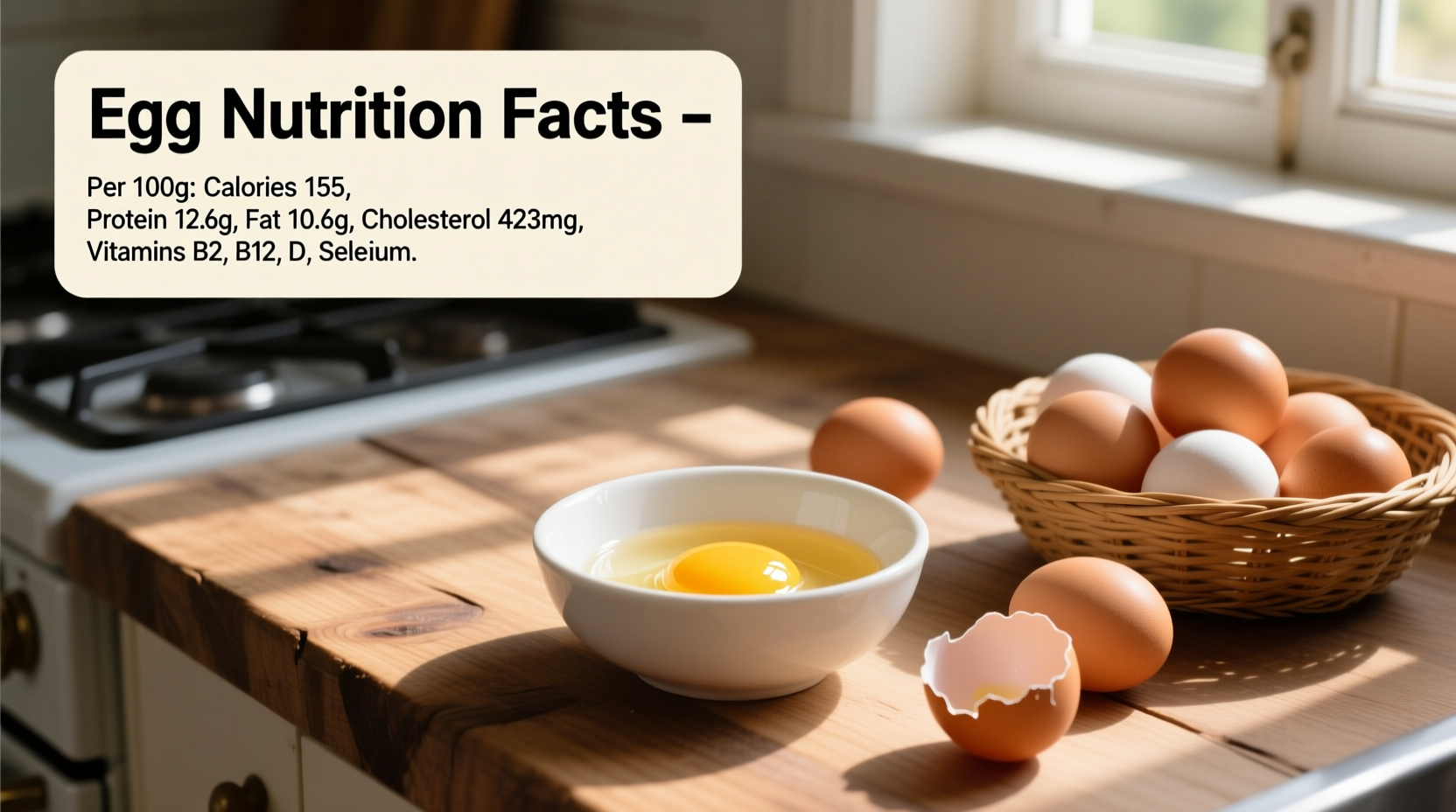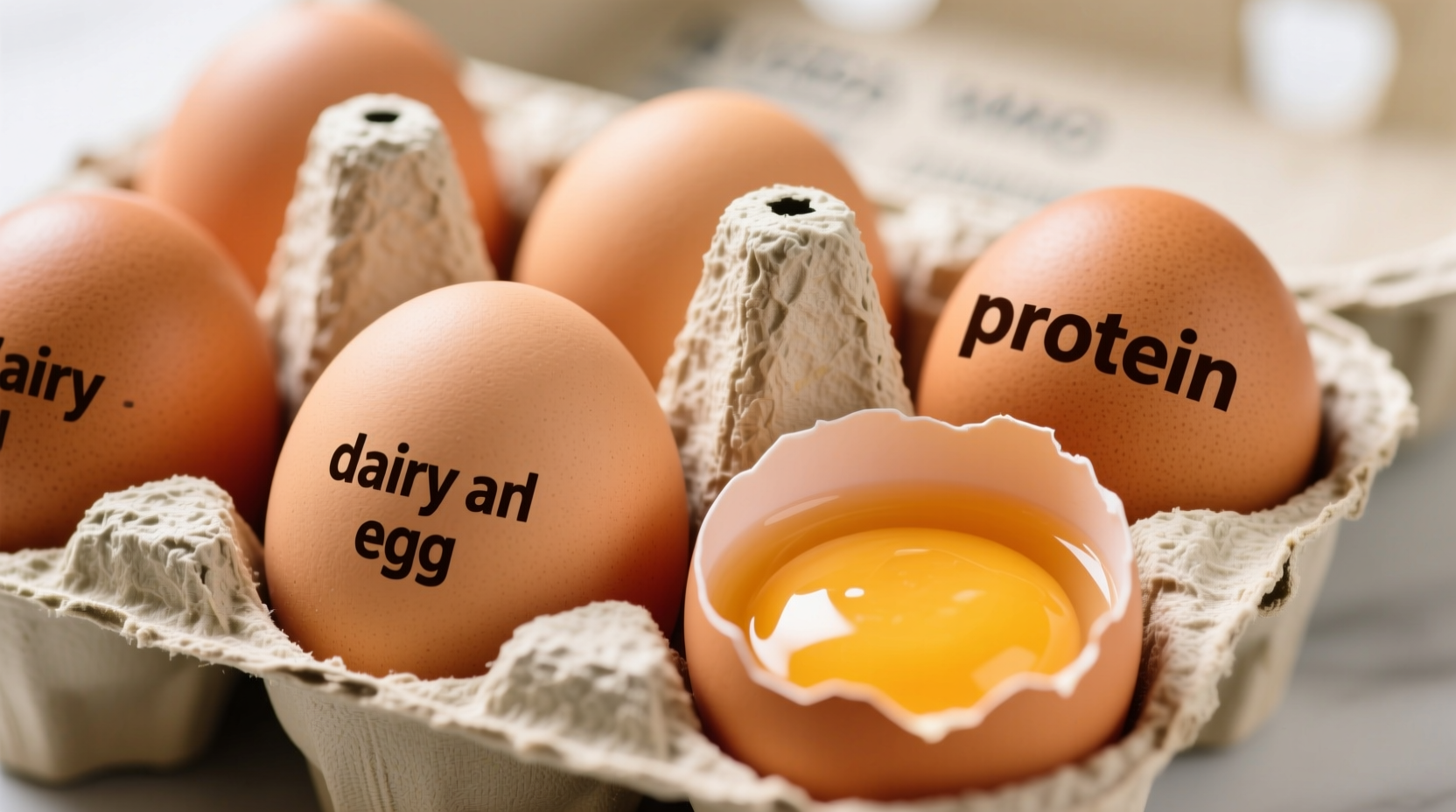When planning balanced meals, understanding where eggs fit in the food classification system is essential. Despite common confusion, eggs have never been part of the dairy group—they're animal byproducts classified under protein foods due to their nutrient composition and biological origin.
Why Eggs Aren't Dairy Products
Many people mistakenly categorize eggs as dairy because they're commonly found in the same supermarket section. However, this placement is for refrigeration convenience, not nutritional classification. Dairy products specifically come from mammalian milk (cow, goat, sheep), while eggs are produced by birds and contain no milk components.
| Characteristic | Eggs | Dairy Products |
|---|---|---|
| Biological Source | Birds (chickens, ducks) | Mammals (cows, goats) |
| Primary Nutrients | Protein, fats, vitamins | Calcium, protein, fats |
| Lactose Content | None | Present (except in aged cheeses) |
| USDA Food Group | Protein | Dairy |
This comparison clearly shows why eggs belong in a different category than dairy products. The USDA's official protein foods group includes eggs alongside meat, poultry, seafood, beans, peas, lentils, nuts, seeds, and soy products.
How Major Nutrition Systems Classify Eggs
The USDA's MyPlate system isn't the only authority on food classification. Understanding how different systems categorize eggs provides valuable context for meal planning:
- USDA MyPlate: Protein foods group
- Canada's Food Guide: Protein foods category
- Australian Guide to Healthy Eating: Lean meats and poultry, fish, eggs, tofu, nuts and seeds group
- Mediterranean Diet: Included with poultry and fish in protein sources
All major nutritional frameworks consistently place eggs in protein-focused categories rather than dairy. This classification reflects eggs' nutritional composition—each large egg provides about 6 grams of high-quality protein along with essential amino acids, vitamins D and B12, choline, and selenium.
Nutritional Profile That Determines Egg Classification
Eggs earned their place in the protein group through their impressive nutritional composition. A single large egg contains:
- 6 grams of complete protein (containing all 9 essential amino acids)
- 70-80 calories
- 5 grams of healthy fats (including omega-3s in enriched eggs)
- Vitamins A, D, E, and B12
- Choline (important for brain health)
- Selenium and other essential minerals
Unlike dairy products, eggs contain no carbohydrates or lactose, making them suitable for low-carb and lactose-intolerant diets. Their nutrient density—particularly the high-quality protein—solidifies their classification in protein food groups across nutritional systems worldwide.

Practical Meal Planning with Eggs
Knowing eggs belong to the protein group helps create balanced meals. According to the Dietary Guidelines for Americans, adults should consume 5-6.5 ounce-equivalents of protein foods daily, with eggs counting as 1 ounce-equivalent per egg.
Here's how to incorporate eggs properly into meal planning:
- Breakfast: Pair one egg (protein) with whole grains (toast) and fruit for a complete meal
- Lunch: Add sliced hard-boiled eggs to salads for protein boost
- Dinner: Use eggs as primary protein source with vegetables and whole grains
- Snacks: Hard-boiled eggs provide portable protein between meals
For vegetarians who include eggs (ovo-vegetarians), they serve as a crucial protein source. The American Heart Association confirms that one egg per day can be part of a heart-healthy diet for most people, further supporting their role as a quality protein option.
Common Misconceptions Clarified
Several persistent myths surround egg classification. Let's address the most common ones:
- "Eggs are dairy because they're in the dairy section": Supermarket placement is for refrigeration convenience, not nutritional classification
- "Eggs contain lactose": Eggs have zero lactose and are safe for lactose-intolerant individuals
- "Organic eggs belong to a different food group": Production method doesn't change nutritional classification
- "Egg whites are in a different category than whole eggs": Both count as protein foods, though yolks contain most nutrients
The Academy of Nutrition and Dietetics emphasizes that food group classification is based on nutritional composition, not production methods or where items are sold. Eggs consistently demonstrate protein-dominant nutritional profiles across all varieties.
Special Dietary Contexts and Egg Classification
While eggs universally belong to protein food groups, certain dietary contexts create important boundaries to understand:
- Vegan diets: Eggs aren't included in any food group as they're animal products
- Kosher diets: Eggs are considered pareve (neutral), not dairy or meat
- Allergen labeling: Eggs are one of the 9 major food allergens requiring special labeling
- Medical diets: Some kidney disease protocols may restrict egg consumption despite their protein classification
These context boundaries demonstrate that while eggs fundamentally belong to protein food groups, specific dietary needs may alter how they're incorporated into meal plans. The National Institutes of Health confirms that for the general population, eggs remain an excellent protein source with no need for restriction based solely on classification.











 浙公网安备
33010002000092号
浙公网安备
33010002000092号 浙B2-20120091-4
浙B2-20120091-4